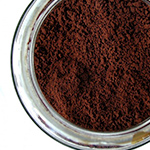‘Ebola Killing Robot’ Invented in San Antonio Texas
Ebola can kill humans quickly, sometimes just a few days after symptoms appear. Its effect on airplanes however, can be even more infectious. Last night for example, the mere mention of the word after a woman threw up caused American Airlines Flight 2791 to make an emergency landing. Hospitals aren’t messing around either: To combat this new threat some have even introduced a special purpose robot — anEbolabot if you will — to fight back.
The “robot” is not much more than a UV lightbulb on wheels at his point, but it is perhaps a preview of more evolved defenses yet to come. The $115,000 device is made by San Antonio-based Xenex Disinfection services and currently does battle with viruses and bacteria in some 250 hospitals across the US. Certainly not least among these is the Dallas hospital where the first US case of Ebola also just took a drastic turn for the worse last night, reports Extreme Tech Website.
The market for remote decontamination services may be even greater abroad. Other countries, like Spain for example, seem to be be taking things a bit more seriously. Authorities in Madrid have just moved to euthanize the dog of the first person to contract Ebola outside of Africa. A study by the CDC in 2005 indicated that dogs can be infected by the virus yet may not be overtly symptomatic. As for Ebola spreading to the rest of Europe, the World Health Organization (WHO) has already chosen their word for the situation: “unavoidable.”
UV light is certainly one way to kill, but if the virus is lurking in a shadowy corner it seems additional measures may be necessary. It can’t hurt at this point to avail ourselves of theCDC guidelines for disinfection and sterilization for healthcare facilities. Liquid decontamination probably could have a place on version 2.0 of the Ebolabot, as may a gaseous beat-down like ethylene oxide which could reach even more concealed recesses. We are not sterilization experts here, or for that matter Ebola experts, but we do try to keep a bit of common sense handy.
Many, as is now apparent, beg to differ. If we can mail over 3,000 soldiers overseas to fight the virus at the drop of a hat, finding a way to send actual medical personnel to Ebola without sending Ebola back to us should be a no-brainer. The idea of keeping the door open for the police if we should spot a prowler in our backyard is difficult to get behind. Already there is indication that level heads will prevail, namely, that no Ebola is good Ebola.
If we do have more cases of Ebola come to our soil, we may eventually might see the Ebolabots in places beyond the hospital. Hopefully for us it won’t come to that. At the moment though, we have no cure for Ebola and the few drugs that show any promise against it are in short supply. Apparently the tap on ZMAPP, one of the most hopeful drugs among these, has temporarily run dry. The best we might offer to those who succumb may be some form of suspended animation to buy them some time — and luckily enough, the first trials for such a procedure were announced earlier this year.







